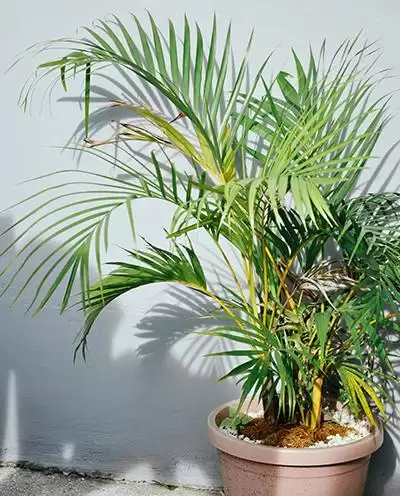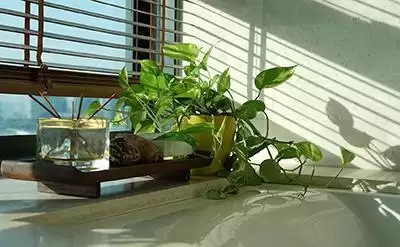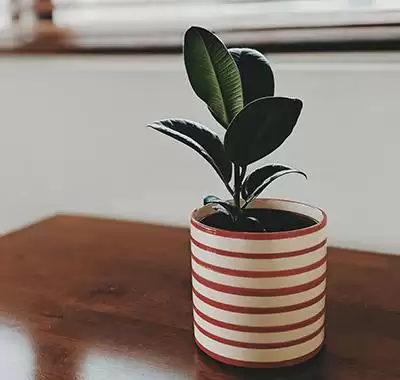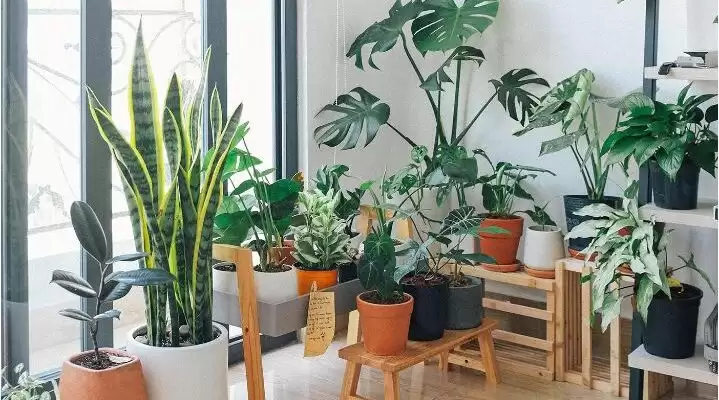In other words, your houseplants not only look beautiful but also work a little harder to clean the air you breathe. Some researchers have suggested that choosing the correct air-freshening plants for your home can help purify the air in your living spaces.
According to NASA’s Clean Air Study, there are several plants that can clean the air in your home of the polluting gases, dust, and bacteria that are present in a variety of household items, materials, and furniture.
A follow-up study published in 2019 found that having several indoor plants work together to purify the air is needed to noticeably improve the quality of the air inside your home up to 93 plants. But because houseplants are a growing trend in interior design that appears to be here to stay, we might as well pick one that will at least somewhat improve the quality of the air we breathe.
Most recently, research by money.co.uk revealed that, according to Google Trends, searches for “purifier plants” have increased by 37%. It’s important that the air quality in our homes is as good as it can be as the winter months draw closer.
Here is our list of the top air purifiers to provide your house with a clean breath of fresh air.
1. Parlor Palm

Partly due to their adaptation to the low lighting prevalent in most homes, parlour palms, which were common during Victorian times, are still popular today. A NASA study on plants that purify the air found that they can also eliminate benzene and trichloroethylene from your house or place of business.
2. Peperomia Obtusifolia
In situations of artificial illumination or indirect, strong light, this indoor plant develops quickly and readily. Although you will be knocked over by these plants, they require constant watering.
The plant gives you rich, oxygen-filled air while quickly removing from your home benzene, formaldehyde, trichloroethane, xylem, and toluene. In the summer, this houseplant thrives.
3. Weeping Fig
Weeping wig is a low-maintenance leafy plant that is known for lowering the amount of pollutants produced in homes by items such as furniture, carpets, and drapes. It requires placement in a bright, indirect area of light and is one of the most resilient indoor air purification plants. It takes a while for it to grow, but once it does, it develops into a large plant that greatly improves the air quality and produces incredible air-cleaning effects.
4. Money Plant

These are powerful antibacterial or air-purifying plants from India that may effectively clean the air in your home. It grows in filtered sunshine and needs frequent watering. These plants need to be pruned frequently since they multiply quickly. The leaves of a money plant are poisonous if consumed by dogs, cats, or young children.
5. Broad lady palm
One of the only plants capable of lowering ammonia levels found in a variety of cleaning products is this one. Because of their high price when grown up, you may wish to look for a small one or grow it from seed.
6. Rubber plant

This hardy low-maintenance potted plant is one of the most popular due to its lovely appearance. An earlier inquiry found that it is a natural humidifier, and NASA has named it one of the top air purifiers. Ideal for adding color to a windowsill or desk.
7. Fittonia ‘Frankie’
Fittonias, sometimes known as “nerve plants,” are low-maintenance indoor air purifiers that remove toluene, benzene, and trichloroethylene from the air. While other types have white and green or green and red foliage, this one, called “Frankie,” have pink and green leaves. Fittonias are ideal for terracotta pots and dish gardens because they bloom 3 to 6 inches tall. Give plants high humidity, moist soil that drains well, and radiant indirect light.
Benefits of Air Purifying Plants
The air we breathe, whether indoors or out is continually a threat to our health. According to studies, due to poor air circulation in the typical home, the air inside is significantly more polluted than the air outside. We breathe in harmful air that has accumulated indoors, which causes headaches, nausea, nose and eye irritation, and dizziness and nausea.
- Reduces dangerous carbon dioxide levels by converting it to oxygen.
- Lowers the levels of some toxins, such as toluene and nitrogen dioxide.
- lowering the amount of airborne dust
- Lowering the air’s temperature.
- Plants reduce background noise.








